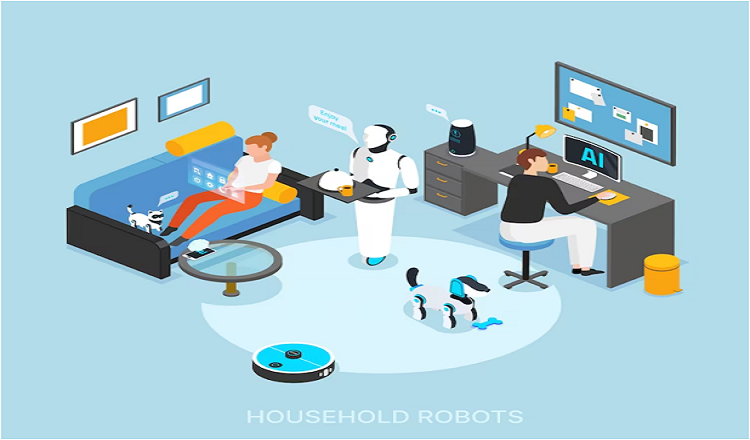Are robots going to take over our jobs? This question has been on the minds of many people as the use of robotics continues to increase in various industries. From manufacturing to healthcare, robots are being used to streamline processes, reduce costs, and increase efficiency. However, as we look to the future, it’s important to consider the potential impact of robotics on the job market and employment opportunities.
First, let’s take a brief look at the current state of robotics. Robots have been used in manufacturing for decades, but their use has expanded to other industries such as healthcare, hospitality, and agriculture. They are being used to perform tasks that are dangerous, repetitive, or require high precision. For example, surgical robots can assist surgeons in performing complex surgeries with greater accuracy and control, while autonomous tractors can navigate fields and perform tasks such as planting and harvesting crops.
The adoption of robotics is only going to increase in the future. According to a report by the International Federation of Robotics, the global sales of robots increased by 16% in 2020, with a total of 373,000 units sold. As more industries realize the benefits of robotics, we can expect to see even more robots in the workplace. But what does this mean for employment opportunities? In this blog, we’ll explore the potential impact of robotics on the job market and discuss the new opportunities that could arise as a result. So, put on your robot helmets and let’s dive in
The Current State of Robotics and Job Market
Robots are already being used in a variety of industries such as manufacturing, healthcare, transportation, and agriculture. In manufacturing, robots have been used for decades to perform repetitive tasks and improve production efficiency. In healthcare, surgical robots are being used to assist with complex surgeries, while robots in senior care facilities can help with tasks such as lifting patients. In the transportation industry, self-driving cars and trucks are being developed to improve safety and efficiency.
The increased use of robots has had both positive and negative impacts on the job market. On one hand, robots have led to increased productivity and efficiency, resulting in lower costs for businesses. On the other hand, the increased use of automation has led to job displacement in some industries. However, the emergence of new types of jobs related to robotics, such as robot maintenance and programming, has also created new opportunities for workers. As robotics technology continues to advance, it’s likely that we’ll see even more changes in the job market in the coming years.
Advancements in Robotics Technology
Recent advancements in robotics technology have been nothing short of remarkable. From increased dexterity to improved perception, robots are becoming more capable and versatile than ever before. The potential applications of advanced robotics are numerous, ranging from advanced manufacturing to space exploration. Advanced robotics can also be used in the medical field for procedures such as surgery and physical therapy. In the transportation industry, autonomous vehicles are becoming increasingly common.
As these advancements continue, we can expect to see significant changes in the job market and employment opportunities. While some jobs may be replaced by robots, there will also be an increased demand for skilled workers who can program, operate, and maintain these advanced robots. The emergence of new types of jobs related to robotics, such as AI engineers and robotics technicians, will create new employment opportunities for those who have the necessary skills and training. Overall, the advancements in robotics technology offer both challenges and opportunities for the job market and employment landscape.
Automation and Job Market
Automation has had a significant impact on the job market, particularly in industries such as manufacturing, transportation, and retail. The increased use of automation has led to increased productivity and efficiency, but has also resulted in job displacement and unemployment. In manufacturing, for example, robots have replaced human workers in many tasks such as assembly and quality control. In the transportation industry, self-driving vehicles have the potential to displace human drivers. And in the retail industry, automation has already replaced many jobs such as cashiers and stockers.
The potential for job displacement and unemployment is a significant concern for workers in industries that are most affected by automation. While there may be new job opportunities created in the fields of robotics and automation, the transition can be challenging for workers who are displaced. It is important for businesses and policymakers to consider the potential impact of automation on the job market and to develop strategies to help workers navigate this transition.
Robotics and Employment Opportunities
As robotics technology continues to advance, we can expect to see the emergence of new job opportunities. These may include positions such as robot operators, robotics technicians, and AI engineers. There will also be opportunities in fields such as engineering, computer science, and data analysis as they relate to robotics technology.
It is important for workers to receive the necessary education and training to prepare for these new opportunities. Community colleges, technical schools, and other training programs can offer courses in robotics technology and related fields. In addition to education and training, the increased use of robotics technology has the potential to improve job satisfaction and working conditions. By replacing repetitive and dangerous tasks, robots can allow workers to focus on more complex and creative tasks, leading to more fulfilling work experiences. Overall, the advancements in robotics technology offer the potential for increased employment opportunities and improved working conditions.
Ethical Considerations and Robotics
The increasing use of robotics technology in the workplace raises important ethical considerations. As robots become more capable and autonomous, there is a risk that they may make decisions that are not aligned with human values and ethics. It is important to establish clear regulations and guidelines to ensure that robots are designed and used in a way that is safe, ethical, and beneficial for society as a whole.
The potential impact of robotics on society extends beyond the workplace, and it is important to consider the broader ethical implications. This may include issues such as privacy, security, and the distribution of wealth and resources. By addressing these ethical considerations and ensuring that robotics technology is used in a responsible and ethical manner, we can harness the potential benefits of these advancements while mitigating potential harms.
Conclusion
In conclusion, the potential impact of robotics on the job market and employment opportunities is significant. While robotics technology has the potential to displace some jobs, it also creates new opportunities for skilled workers in fields related to robotics technology. It is essential for individuals and organizations to prepare for the changes brought by robotics technology, including the need for education and training in new fields and the consideration of ethical implications.
The role of robotics in shaping the future of work is a complex and evolving issue. However, it is clear that robotics technology will play an increasingly important role in the workplace, and it is crucial that we approach this technology in a responsible and ethical manner. Organizations must consider the potential impact of robotics on their workforce and take steps to ensure that workers are prepared for the changes that lie ahead.
In conclusion, the potential impact of robotics technology on the job market and employment opportunities is both a challenge and an opportunity. By embracing the potential of robotics technology while taking steps to address the challenges that it poses, we can ensure a more prosperous and equitable future for workers and society as a whole.




